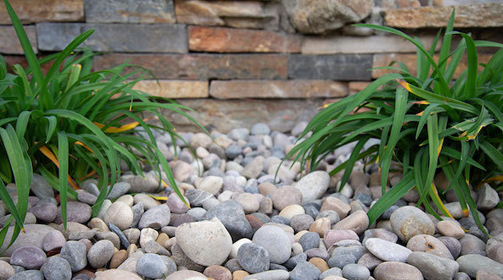Question: My lawn was weed free after the last application of herbicides, but then became weed-infested again?
Answer: It is not that the application didn’t work. Weeds tell you a lot about the condition of your lawn and are an indication of what you need to do to grow healthy grass. Weeds thrive in soil that is compacted, poorly fertilized, and not pH balanced. They are also found in lawns that are improperly watered, seeded, and mowed. As you can see it takes more than just fertilizer to make your lawn weed free. Eliminate the conditions that promote weeds by doing the following:
- Aerate your lawn in either the spring or the fall. Aerating removes soil plugs from the lawn and allows air, water, and nutrients to reach the root system. This increases the activity of soil microorganisms that decompose thatch. Oftentimes, aerating is done to help relieve soil compaction. Soil compaction reduces the amount of air in the soil and is a physical barrier to root growth.
- Dethatch your lawn if needed. Thatch is a layer of grass stems and roots on the surface of the soil. When it becomes 1/2” or more, the grass roots will grow within the thatch instead of in the soil. If thatch build-up is not controlled grass is susceptible to insects, disease, and weather stress.
- Use proper mowing techniques. Improper mowing techniques cause many lawn problems. If you mow lower than 1 and 1/2 inches you can kill the root system. A low mowing height also allows sunlight to reach weed seeds that are trying to germinate. A majority of lawns should be kept at 3-3 and 1/2 inches. This will help create a deeper, more drought-resistant root system. Also, keep your mower blades sharp! By doing so, you will prevent the development and spread of fungal diseases.
- Mow in different directions. Mowing in the same direction can cause compaction, which weeds love. Try not to cut wet grass. It causes uneven cuts, the clippings clog the mower, and clumps can block sunlight. With proper mowing techniques, you will see a huge improvement in the health and appearance of your lawn.
- Maintain the pH of your soil. An ideal pH level is between 6.5 and 7. If it is lower than 6.5 your soil is too acidic and above 7 your soil is too alkaline.
- Properly fertilize your lawn. For those who want their lawn to look the best, they should fertilize a minimum of 4-5 times a year.
The war on weeds will never truly be over. However, if you follow these tips then you will be able to win many battles against the weeds and be able to protect your lawn.

I was able to find good info from your blog articles. Simone Raviv Bortz
Excellent blog post. I definitely appreciate this website. Keep it up! Blanch Efren Leilah
You should be a part of a contest for one of the most useful websites online. I will recommend this web site! Tiphany Ozzy Cila
Looking forward to reading more. Great post. Thanks Again. Keep writing. Darda Kilian Kostival
Hello there, I found your blog via Google while searching for a related topic, your website came up, it looks great. I have bookmarked it in my google bookmarks.